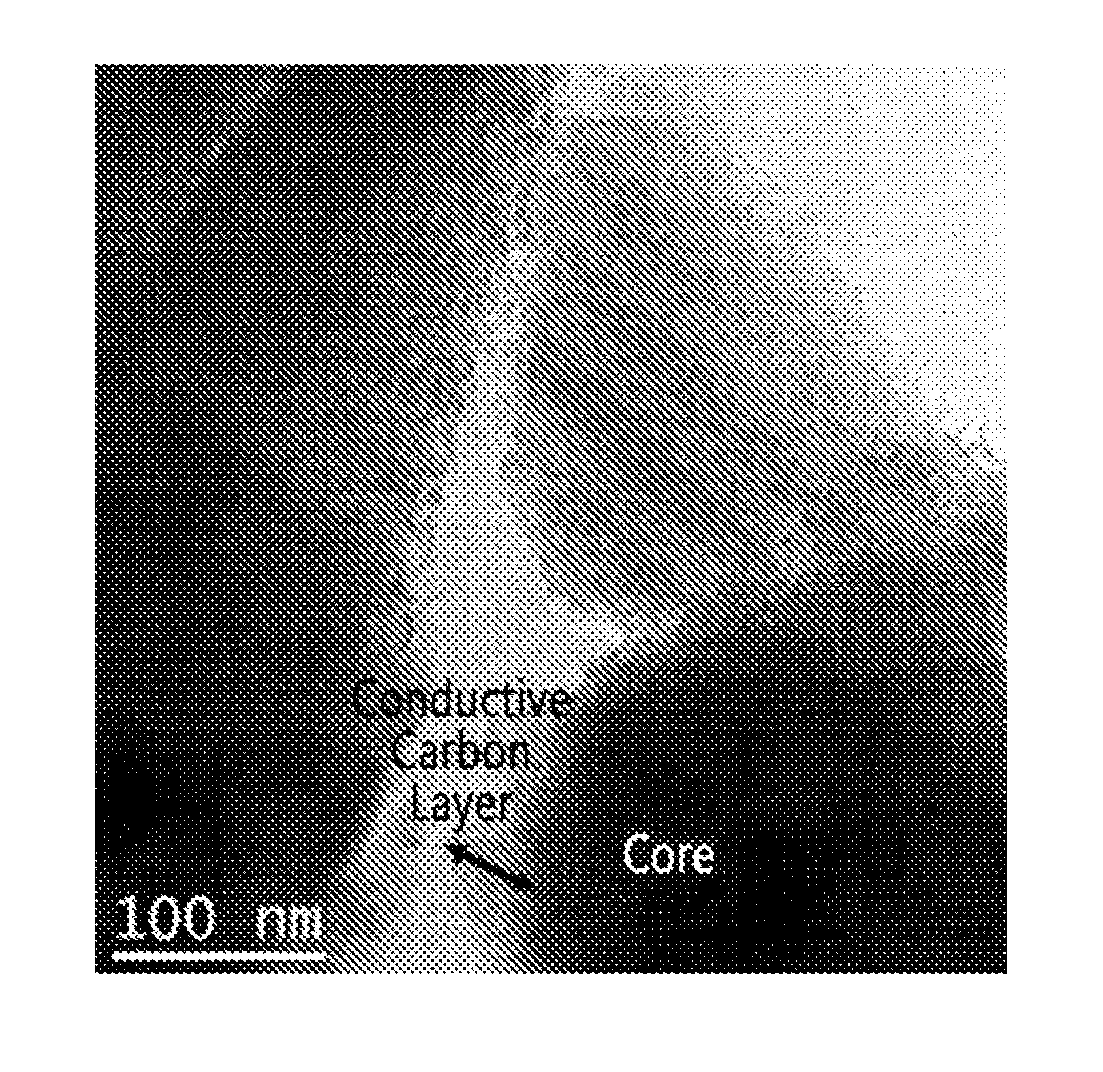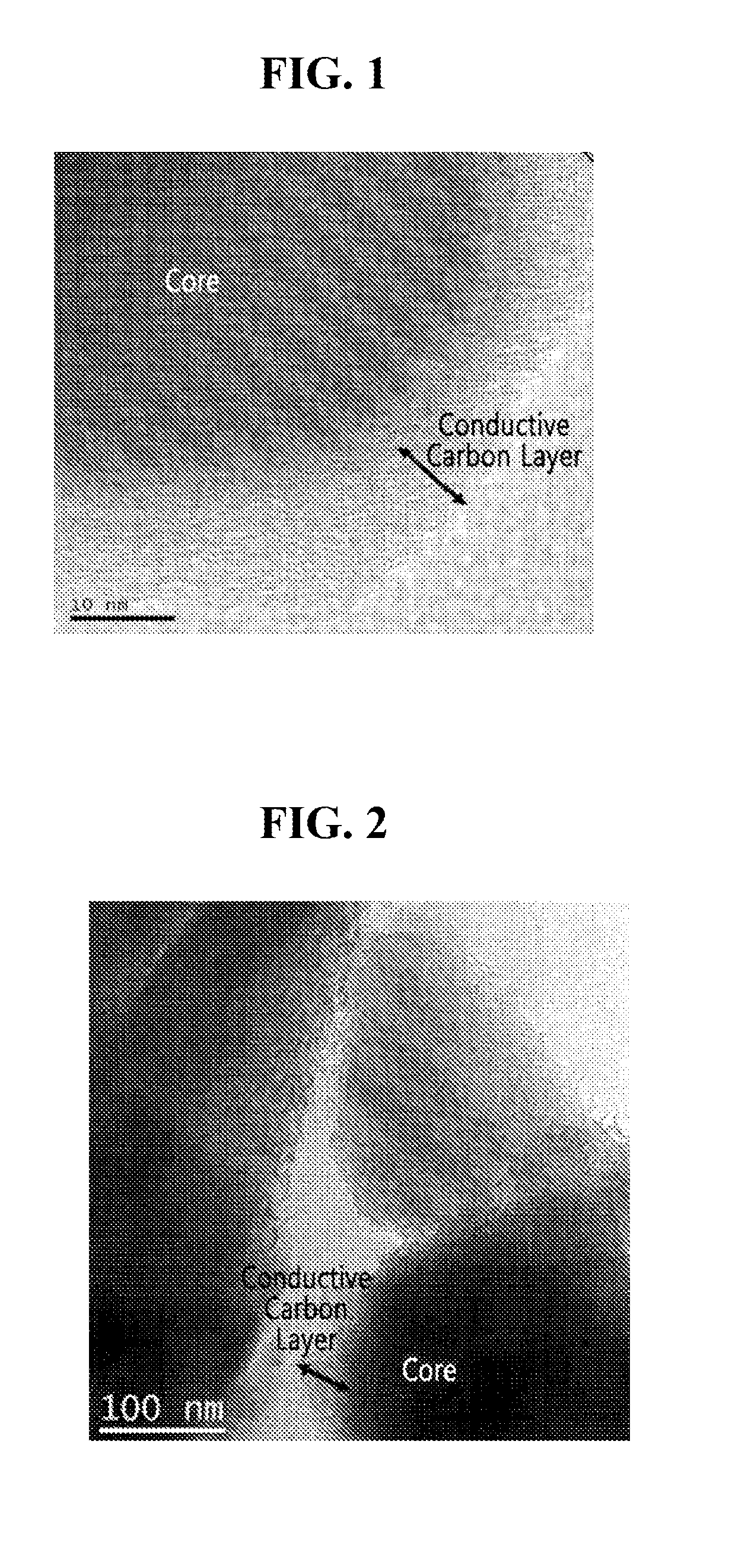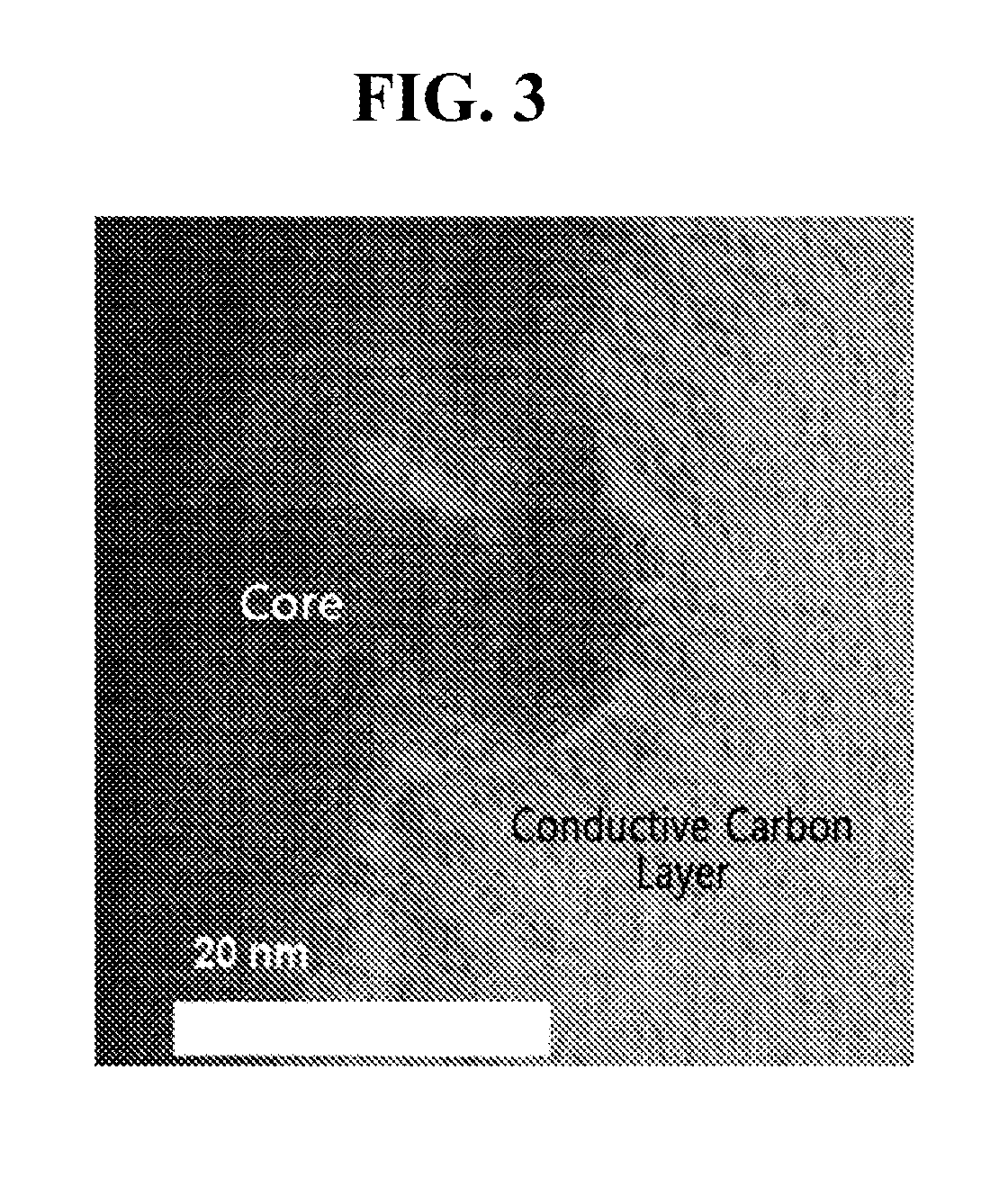Electrode active material for lithium secondary battery and preparation thereof
a lithium secondary battery and active material technology, applied in the manufacture of electrodes, cell components, final product manufacturing, etc., can solve the problems of low reversibility and safety of lithium, cracks and micronization of active materials, and reduce cycle life, and achieve high capacity
- Summary
- Abstract
- Description
- Claims
- Application Information
AI Technical Summary
Benefits of technology
Problems solved by technology
Method used
Image
Examples
example 2
[0071]The procedures of Example 1 were repeated except that the coating of a conductive carbon material was carried out by using methane as a raw material in a rotary tube furnace, to prepare an electrode active material and a battery.
[0072]The formation of a conductive carbon coating layer using methane was specifically carried out as follows.
[0073]20 g of Core-forming material was introduced in a rotary tube furnace, in which argon gas was supplied in a rate of 0.5 L / min, and the temperature of the furnace was raised up to 900° C. in a speed of 5° C. / min. The heat treatment was carried out for 5 hours by rotating the rotary tube furnace at 10 rpm while supplying 1.8 L / min of argon gas and 0.3 L / min of methane gas, to prepare an electrode active material having a conductive carbon coating layer.
[0074]It was confirmed that the amount of conductive carbon in the conductive carbon layer is 5 parts by weight based on 100 parts by weight of the core-forming material. The TEM photograph ...
example 3
[0075]The procedures of Example 1 were repeated except that the coating of a conductive carbon material was carried out by mixing 100 parts by weight of the core-forming material with 10 parts by weight of artificial graphite having D50=15 μm, putting stainless balls having a 3 mm-diameter and the powders of the resulting mixture in a weight ratio of 5:1 in a mechano fusion device (Hosokawa Micron), and then mechanical alloying was carried out at 600 rpm for 30 minutes, to prepare an electrode active material and a battery.
[0076]The TEM photograph of the electrode active material having the conductive carbon layer according to the present invention was shown in FIG. 3.
experimental example
Charge / Discharge Characteristics of Batteries
[0079]The batteries prepared in Examples and Comparative Examples were evaluated for their charge / discharge characteristics.
[0080]Charging of the batteries was conducted up to 5 mV at constant current, and completed when a current density reached 0.005 C. Discharging of the batteries was conducted up to 1.0 V at constant current.
[0081]Also, in order to evaluate the rate capability of the batteries, after charging and discharging at 0.1 C, the charge and discharge rate capabilities of the batteries were measured based on the charge and discharge capacities thereof. In the case of the discharge rate capability, in order to minimize an influence by the charge rate capability, it was measured by charging the batteries at 0.1 C and then discharging them in the corresponding rate.
[0082]The results of charge / discharge characteristics are shown in Table 1.
TABLE 1PowderDischargeInitialRate Capability (%)ResistivityCapacityEfficientyChargeDischarge...
PUM
| Property | Measurement | Unit |
|---|---|---|
| temperature | aaaaa | aaaaa |
| temperature | aaaaa | aaaaa |
| temperature | aaaaa | aaaaa |
Abstract
Description
Claims
Application Information
 Login to View More
Login to View More - R&D
- Intellectual Property
- Life Sciences
- Materials
- Tech Scout
- Unparalleled Data Quality
- Higher Quality Content
- 60% Fewer Hallucinations
Browse by: Latest US Patents, China's latest patents, Technical Efficacy Thesaurus, Application Domain, Technology Topic, Popular Technical Reports.
© 2025 PatSnap. All rights reserved.Legal|Privacy policy|Modern Slavery Act Transparency Statement|Sitemap|About US| Contact US: help@patsnap.com



